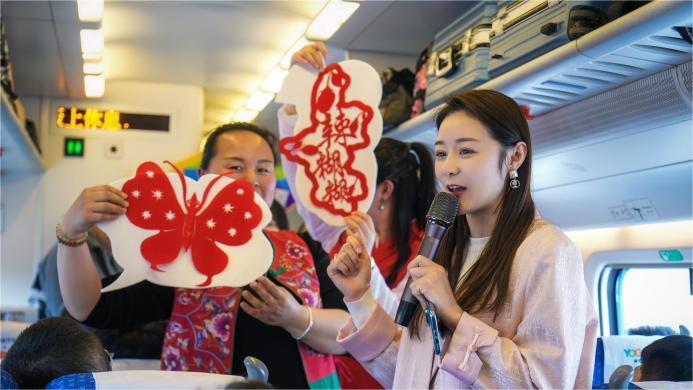Technology adds value to rice-crayfish co-culture
CHANGSHA, March 28 (Xinhua) -- Nanxian, a lakeside county in central China's Hunan Province, is about to harvest the first batch of crayfish this year. Some of the crayfish will make their way to dinner tables around the country, while some will enter factory workshops as raw materials that are eventually produced into facial masks, skincare products and healthcare products.
A major producer of crayfish at the Dongting Lake, Nanxian County has more than 41,300 hectares of paddy fields where crayfish are raised.
Applying innovative technologies in cooperation with colleges and universities, local companies have extracted high-end and value-added products from crayfish and rice.
At a workshop of Beibeisheng, a local biotechnology company producing astaxanthin and chitosan, crayfish shells -- residues collected from aquatic product processing -- were processed into white and dry chitosan. As important raw materials to produce healthcare products and animal feeding stuff, chitosan will be sold to downstream factories for further processing.
Liu Hongchang, manager of the company, said the company is one of the first chitosan producers in China, with their products in short of demand.
According to Liu, 3.5 kg of astaxanthin oil at the concentration of 5 percent can be extracted from every tonne of fresh crayfish shells, and the company's designed astaxanthin production capacity reaches 100 tonnes a year.
He added that the company also has workshops producing bio-calcium, amino sugar and protein powder.
Figures show more than 135,000 people are engaged in the businesses related to the rice and crayfish industry in Nanxian County, with the entire industrial output reaching 16 billion yuan (about 2.3 billion U.S. dollars).
At a workshop of a rice company, fully-automated equipment has been adopted, processing 50 tonnes of rice within eight hours a day. Merely eight employees are needed to complete more than 20 procedures from drying to packaging.
Established in 2020, the company, in cooperation with the Central South University of Forestry and Technology based in the provincial capital of Changsha, has developed a targeted milling technology to extract rice germs, the most nutritious part of rice used as materials to make baby's complementary feeding diet and healthcare products.
Liao Juan, general manager of the company, said the technology has greatly added value to their products.
Liao said 50 kg of unmilled rice can generate an output of 420 yuan if it is processed into rice, while the same amount of unmilled rice can produce 1,360 yuan of output if rice germs are extracted from it.
"Through innovation, research and development, we will fully exploit the value of the grain," she said.
Photos
Related Stories
- Old is out, new is in
- China's internet audio, video convention focuses on new technologies
- Chinese tech firm EHang sells low-altitude aircraft on e-commerce platform
- Chinese private rocket company readies 'Falcon 9 equivalent' for maiden flight
- China's advancements in global innovation dynamics inspiring
- Micron Tech cements bond with China
Copyright © 2024 People's Daily Online. All Rights Reserved.









